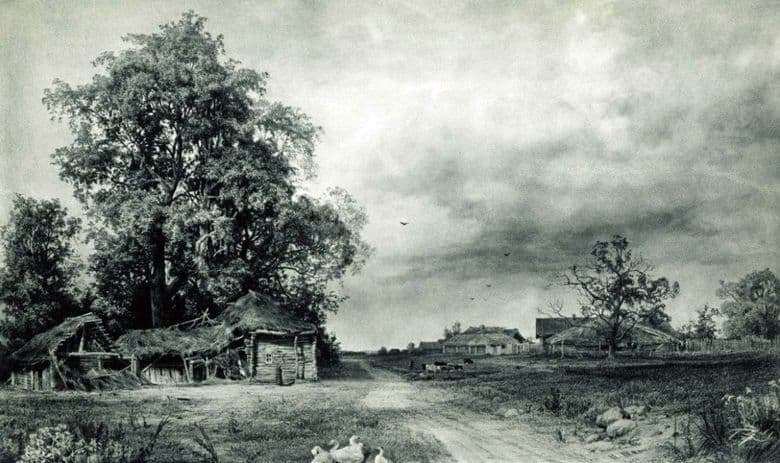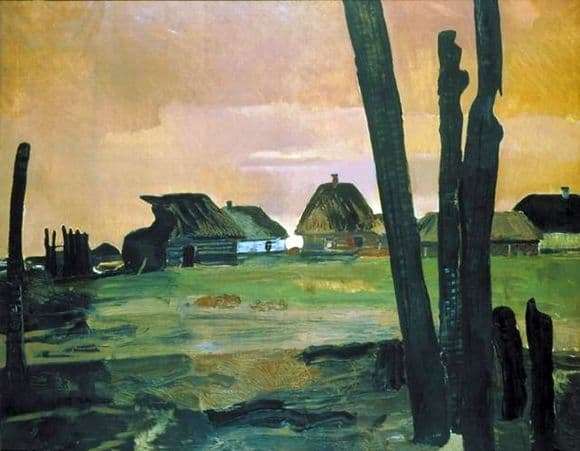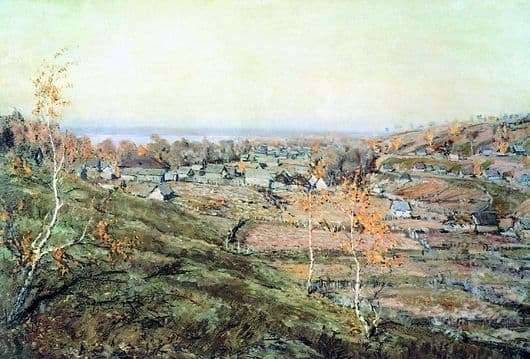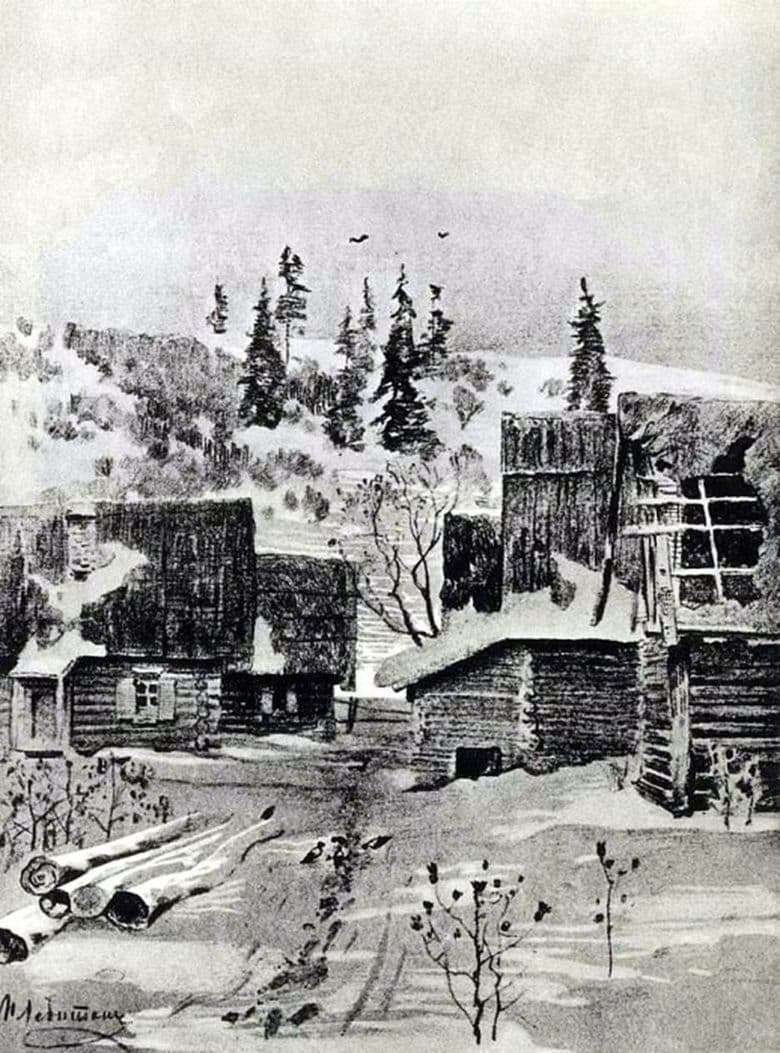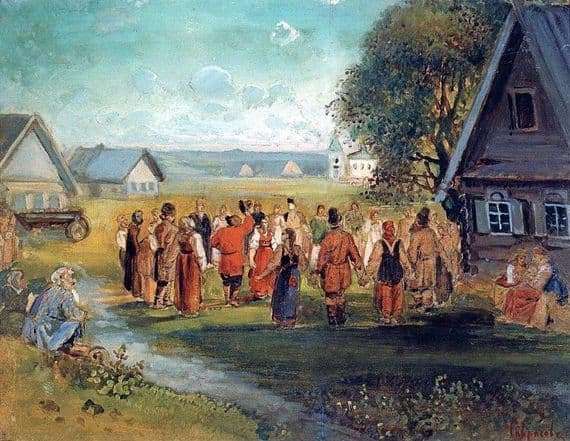
The canvas is a landscape, written in the mature period of the master. It is sufficiently familiar to realistic painting traditions, characterized by a lack of sophistication and individuality, and this was at the time when painting preferred the brilliance and expressiveness of the image, the impulsiveness of colorful spots. It was then that the landscape of experiences and moods developed and received enormous distribution.
In the picture the inconspicuous rainy twilight, the gray sky covered with heavy bluish clouds with small gaps, puddles shine in the village street. Near the old dilapidated little houses stands a spreading tree in lush greenery. On the road, a wet woman, whose face is not visible, in a peasant dress with a red scarf on her head feeds chickens. On the left in the foreground is a village well, above which stands an icon, weather-protected by a tiny home-made roof.
The unpretentiousness and restraint of the pictorial organization of this landscape, which has a significant moral principle, makes it possible to classify it as examples of classical art. The composition of the canvas is simple, but interesting and masterful, but the plot construction is quite intricate. When creating a landscape, the author shied away from a detailed detailed reference to all the details. He abstains from naturalistic images of nature. Little things that are not related to the storyline, veiled, obscured by them, with every detail is in the right place, it occurs in harmony with the environment and becomes an event.
The unstable and unreliable state of the environment reproduced by the artist. It conveys the approach of twilight, the heavens barely lit by the skies, the village huts going to sleep, with a faint smoke hovering over one of them. The author does not single out any such details, they all unite in the integral inseparable harmony of the natural state, the author’s perception and incessantly continuing being. This philosophical plan includes the life of the village with its individual episodes: the rainy road, the well, the popular Orthodoxy. All these concepts merge together, forming the idea of correlating village life with the everyday life associated with a country path that is extensive in time and space. The landscape, devoid of pretentiousness, expresses a picture of the world of a huge country.
Description of the painting by Alexander Kiselev “Entry into the village” (1891)


